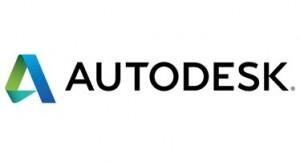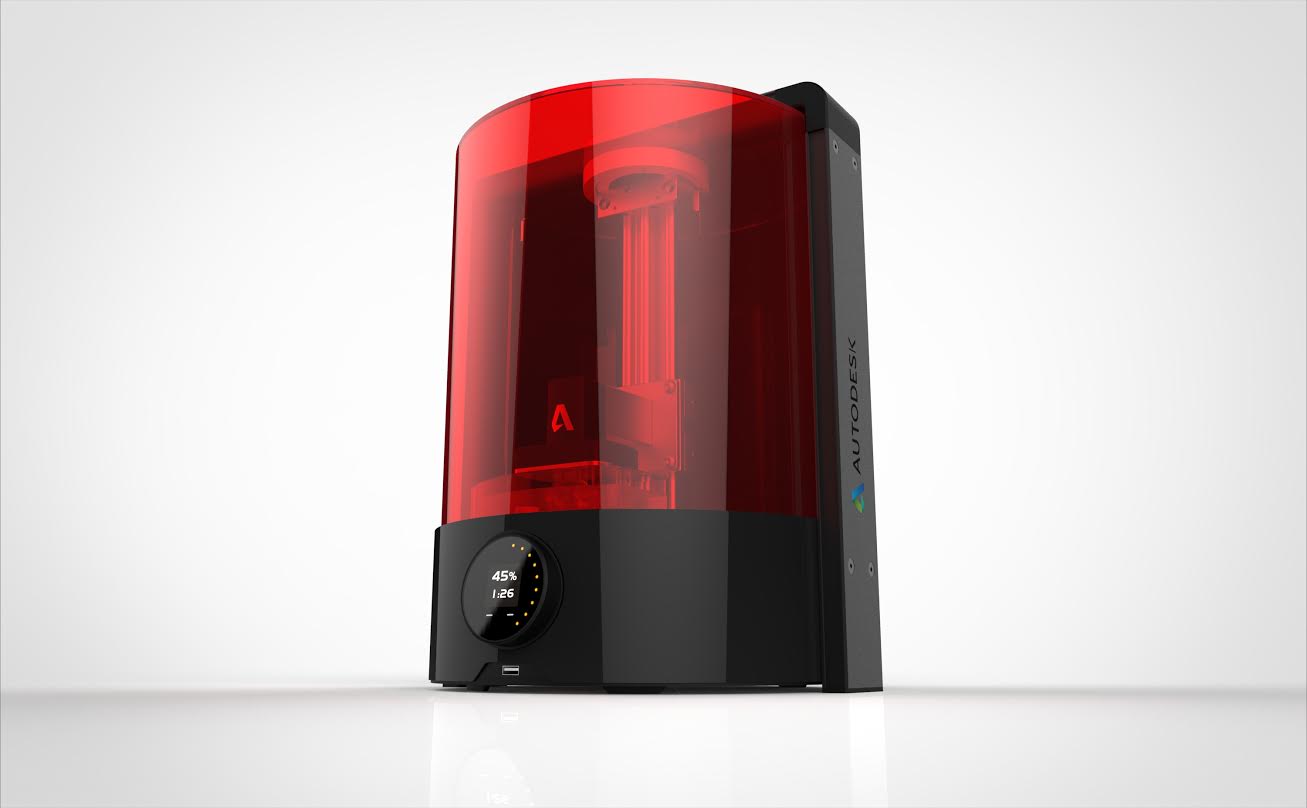Autodesk CTO Reveals Details of Their Spark 3D Printing Platform & Printer: More coming at Inside 3D Printing Conference
Autodesk CTO Jeff Kowalski tells us why we should be excited about the new Spark platform, hints at wide-scale adoption by some major 3D printing players and foreshadows a brand new Autodesk 3D printing design software that will be coming soon.
 Back in in May, we reported that Autodesk was working on both an SLA 3D printer as well as a 3D printing platform called ‘Spark’. Since then, some additional details have been made available to the general public about what the company hopes to accomplish with this new platform, as well as some specification for their new 3D printer. Autodesk CTO, Jeff Kowalski was kind enough to take some time out of his busy schedule in order to speak with 3DPrint.com about the company’s foray into the 3D printing space.
Back in in May, we reported that Autodesk was working on both an SLA 3D printer as well as a 3D printing platform called ‘Spark’. Since then, some additional details have been made available to the general public about what the company hopes to accomplish with this new platform, as well as some specification for their new 3D printer. Autodesk CTO, Jeff Kowalski was kind enough to take some time out of his busy schedule in order to speak with 3DPrint.com about the company’s foray into the 3D printing space.
Kowalski is scheduled to give a keynote speech at the upcoming Inside 3D Printing Conference and Expo in Santa Clara, California. The conference, which runs from October 21 – 23, will feature 57 informational sessions, 4 keynote sessions, over 60 speakers and more than 30 exhibitors. It will surely be an event to attend if you wish to get an inside track on this up and coming technology.
When Autodesk announced that they would be creating an SLA 3D printer, excitement immediately ensued. A company with a market capital of $12.6 billion, deciding to enter the 3D printing market, is nothing to joke about. Questions began popping up as to what will make this new 3D printer stand out from the rest. What will make it better than other SLA 3D printers on the market today, such as FormLabs Form1+? The answer, when concerning the hardware, may surprise you. Quite simply, there is nothing all that special with the new Autodesk SLA 3D printer. In fact, this entire entry into the 3D printing space by Autodesk isn’t focused on them becoming a hardware company at all. The release of the 3D printer is merely a means to show off what could quite easily be one of the most innovative software products to come to the 3D printing space in quite some time.
This entry into the market is not about the company’s 3D printer, but instead it is all about “Spark”, the 3D printing platform that Autodesk hopes will take the technology to the next level.
“Spark brings together a whole bunch of technology that Autodesk has had under wraps,” explained Autodesk CTO Jeff Kowalski to 3DPrint.com. “We have been around for 32 years, so we have been developing a lot of algorithms for a variety of different technologies, a good number of which are highly applicable to 3D printing. When we take a look at the state of affairs within 3D printing today, it has got a lot of excitement. It’s moving pretty quickly with the number of players that are doing some pretty interesting things, but on the other hand it’s also sort of disappointing if you take a look at where it is today and where the promise really is. So we decided to step in and help the community out by creating this Spark platform, and putting our best technology in place in an open way that allows for folks to sort of reset the level of 3D printing.”
Spark is to 3D printers, as Android is to smartphones. This analogy is probably as good a way of explaining what Autodesk’s ultimate goal is when it comes to 3D printing and additive manufacturing technologies. If you remember back several years ago when Google launched Android, a big deal was made about them proceeding that launch a couple years later, with the subsequent release of their very own smartphone called the Nexus One. The main purpose of the Nexus phone was simply to show off what Android was capable of doing, and it wasn’t to profit off of selling a smartphone (at least not at the time). The same situation is one in which Autodesk sees themselves in. They are creating their own 3D printer to show off what Spark is capable of doing.
“We don’t aim to own the manufacturing and selling and distribution of 3D printers,” said Kowalski. “What we really need to do is put out an example of a really great 3D printer that leverages the Spark platform, and can serve as a reference point for others looking to leverage that same platform and build printers.”
Just like how Android has benefited from the open source developers community, Autodesk hopes that their free open source 3D printer platform will also see much progress from the developer community as well.
While the Autodesk 3D printer will be a DLP SLA based machine, Spark will be compatible with any and all types of 3D printers, whether it is SLA, FDM, or even industrial level selective laser sintering machines. You name it, Spark will have it covered. The algorithms which the platform includes will be applicable all the way across the entire spectrum of 3D printing technologies. “Inside the Spark platform there is going to be plenty of other technology applicable also for FDM, and so we will either work with partners or maybe even produce another example printer that would show off FDM in the future,” said Kowalski.
Partnerships are huge, and this is what Autodesk is relying on. While no announcements have been made as of yet, from my conversation with Kowalski, I get the hunch that there are some major, players on board already. He wasn’t able to disclose any names, but when I asked if there were any major players such as MakerBot, Stratasys, 3D Systems or FormLabs on board, he did inform us that some news would be coming soon.
“We aren’t ready to announce them, but I can talk about them when I give my keynote (at the Inside 3D Printing Conference in Santa Clara),” he stated. “Most recently we announced that we brought local motors on board. They are doing FDM, but they are doing it on such a large scale that it’s considered to be industrial. In terms of other partners, we are under agreements with them not to disclose quite so quickly. I’ll be talking about them at the keynote. Our objective is to get as many of them as possible in on the program. We have received a huge amount of interest from folks that you know and folks that you also have not even heard of yet because they are sort of in pre-launch/pre-announce [mode]. Just about every name you can imagine on the 3D printing roster, we’ve been having conversations with. We are eager to sign up a variety of different partners. What we are going to wind up doing with this platform, if it goes well, is really give confidence to those who are looking to create printers and use printers.”
Basically what Autodesk is hoping for, besides the rapid, large scale adoption within the market, is the creation of an ecosystem that eliminates the frustration experienced in the process of 3D printing and brings it up to par with the ease of use experienced when using a traditional 2-dimensional desktop printer. Kowalski talked at length about how he recalled the difficulties he experienced when wanting to simply print out a document on a regular desktop 2D printer when they first hit the market some time ago. However, with time, the entire process became pretty much completely automated and that is where we remain today. This is what Autodesk hopes to do for 3D printing with the launch of Spark.
Kowalski, feels that 3D printing has not even come close to reaching its overall potential. The main reason for this is because all of the new companies that wish to bring their printers to market must not only create the hardware, but also the firmware, software and in many cases a marketplace for digital designs. Spark will allow these companies to only focus on the hardware aspects of designing the best possible 3D printers that they can, while letting the Spark platform do the rest, and Kowalski believes that Autodesk is just the perfect company to aid in creating this required ecosystem.
“If you look at what we have done in our consumer group overall, we’ve got a track record, over our relatively short history (maybe around 5 years or so), of making really great applications that use sophisticated design technology, packaged in a way that is super easy to adopt,” he said. “We hope to take that same kind of success that we have shown there and bring it into 3D printing, so that we can make 3D printing something that is a lot more natural, easy, less daunting, and far more effective and reliable than it used to be. It’s challenging for folks to create 3D models. We’ve addressed that with our products. It’s challenging for them to print [these models] because they don’t know exactly how the process should proceed, and what could possibly go wrong. We are trying to eliminate those steps, and we want to make it as easy as ‘file, print’, one click and its there, as opposed to having to optimize (prints) for the build platform, build type, material type, orientation and all of that (other) stuff.”
He tells us that he doesn’t think the typical user wants to learn all about wall thicknesses, support structures and all the other complicated 3D printing jargon. The goal with Spark is to completely remove any and all concerns from the users themselves.
“The design software that we are creating will also be making use of advanced materials and in some cases bespoke materials,” explained Kowalski. “In the future, I dream of the day when we are actually making alloys in the machine.”
Materials are one of the main issues that he sees, which is holding back current 3D printing technology, specifically on consumer-level FDM and SLA machines. He sees great potential in the future for a plethora of new material options when looking to 3D print products. “We have the possibility of laying a different material in every single dot that the (3D print) head traverses,” he explained. “We could be presenting entirely new kinds of engineered materials that we were not able to make using any other process, and yet I don’t see any printers out there on the market that do that effectively today. We want to open up that field to experimentation.”
He feels that people are forced to design products based on which materials are able to be extruded, formed, or laid down by a 3D printer, whereas in the future he believe we will be more focused on which materials will make the end products the best possible products they can be. With Spark, he hopes this becomes a possibility within the next five years or so.
When Kowalski talks about the most important aspects of Spark, he mentions that there is the ability it provides for slicing an object, creating the needed print orientation for that object, as well as path optimization and other typical settings that most people without a background in 3D printing can understand. However, what he believes is the most important aspect of the platform, is its openness and the fact that it will be out there in the community, where developers will be able to contribute to it and derive from it. It’s just a matter of time before it all catches on.
 Autodesk has plans to release a new type of 3D printing design software which should make it easier to design products for 3D printing. Kowalski could not tell us much more about this software, as they have not officially announced it yet, but did say that he would be showing it off at the Inside 3D Printing Conference in Santa Clara this October.
Autodesk has plans to release a new type of 3D printing design software which should make it easier to design products for 3D printing. Kowalski could not tell us much more about this software, as they have not officially announced it yet, but did say that he would be showing it off at the Inside 3D Printing Conference in Santa Clara this October.
As for the Spark platform, it will be released sometime before the end of the year, and from the sounds of it, there may be several large companies jumping on board at launch. There will also be many new 3D printers coming to market that utilize this platform for their new machines. The end of this year, into the beginning of next, will be an extremely exciting time for the 3D printing space. We may just be about to see the 3D printing industry explode in a similar way we saw the smartphone market erupt slightly after Google introduced their Android platform. So stop getting excited about Autodesk’s new 3D printer, and start getting exciting about the software behind it, Spark!
Only time will tell if Autodesk’s Spark will be a success, but if history means anything, I’m throwing all my pennies into the pot in predicting that we are about to see something very special emerge. Be sure to register now in order to see Jeff Kowalski give what should be a very interesting keynote speech at the Inside 3D Printing Conference in Santa Clara.
What do you think? Will Spark be the platform that pushes 3D printing into the mainstream? Discuss in the Autodesk Spark forum thread on 3DPB.com.
Subscribe to Our Email Newsletter
Stay up-to-date on all the latest news from the 3D printing industry and receive information and offers from third party vendors.
Print Services
Upload your 3D Models and get them printed quickly and efficiently.
You May Also Like
3D Printing News Briefs, July 2, 2025: Copper Alloys, Defense Manufacturing, & More
We’re starting off with metals in today’s 3D Printing News Briefs, as Farsoon has unveiled a large-scale AM solution for copper alloys, and Meltio used its wire-laser metal solution to...
3DPOD 260: John Hart on VulcanForms, MIT, Desktop Metal and More
John Hart is a Professor at MIT; he´s also the director of the Laboratory for Manufacturing and Productivity as well as the director of the Center for Advanced Production Technologies....
3D Printing News Briefs, June 28, 2025: Defense Accelerator, Surgical Models, & More
In this weekend’s 3D Printing News Briefs, 3YOURMIND was selected to join an EU Defense Accelerator, and PTC has announced model-based definition (MBD) capabilities within Onshape. Finally, a study out...
EOS in India: AM’s Rising Star
EOS is doubling down on India. With a growing base of aerospace startups, new government policies, and a massive engineering workforce, India is quickly becoming one of the most important...



































